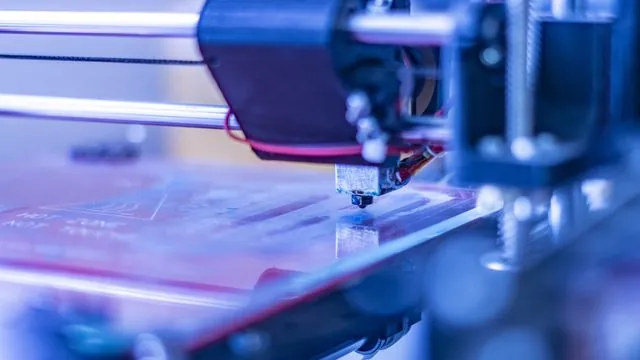
The Revolutionary Future of Healthcare: Shape-Shifting Biomaterials for Tissue Regeneration
2024-12-16
Author: Wei Ling
Imagine a world where medical devices can adapt in real-time to the unique needs of your body. Inspired by the remarkable mechanics of nature, particularly the pinecone's ability to open and close based on humidity, scientists are making strides in developing shape-shifting biomaterials that could revolutionize the field of medicine.
In 2013, Skylar Tibbits, an associate professor at the Massachusetts Institute of Technology, introduced 4D printing technology, which goes beyond traditional 3D printing by incorporating time as a dimension. This innovative method allows materials to change shape autonomously in response to environmental stimuli like temperature, humidity, light, or pressure—echoing how a pinecone protects its seeds or releases them when conditions are optimal.
The implications of these materials extend far beyond architectural designs. In the biomedical field, 4D printing is paving the way for dynamic biomaterials that can adapt to the body's ever-changing conditions. This technology holds the potential for creating sophisticated medical devices, such as stents and orthopedic implants, that can be implanted in a compact state and then expand to their full size after reaching their targeted location within the body—reducing the need for invasive surgical procedures.
Additionally, Amir Zadpoor, a prominent professor in biomaterials and tissue biomechanics, notes that initial configurations can be flat, allowing for the incorporation of complex patterns and functionalities, such as nanopatterns that promote cell growth or inhibit bacterial growth. This advancement could vastly improve post-operative recovery and long-term outcomes for patients.
Key Innovations and Materials
To produce these smart biomaterials, researchers focus on a few essential characteristics: compatibility with advanced 3D printing methods, biocompatibility for safe use in the body, and the ability to change shape under specific stimuli. Hydrogels, which are highly absorbent polymer networks, are particularly favored in these materials for their capacity to swell or shrink in response to moisture levels.
Recent breakthroughs have shown promise in the creation of scaffolds with multiple layers that bend in predictable ways when exposed to liquids. For example, two distinct hydrogel materials can be combined to develop a self-bending structure that mimics the natural curvature of cartilage, potentially paving the way for the regeneration of complex tissue types.
Real-World Applications
The adaptability of these smart materials offers a myriad of exciting applications in healthcare. For vascular and intestinal stents, specific designs have been developed to adjust according to body temperature or blood flow, leading to more personalized patient care. Imagine a stent that changes its diameter in response to the internal environment—this could significantly reduce complications and the need for additional surgeries.
4D technology is also being utilized to create patches that aid in heart tissue repair, mimicking the heart's natural movements and improving integration with existing tissues. By incorporating live cells into these scaffolds, researchers are investigating how best to replicate the intricate architecture of heart tissue—a critical factor in successful recovery post-injury.
The Future of Drug Delivery
Shape-shifting materials have the potential to revolutionize drug delivery as well. Recent studies have reported the development of bioinspired capsules that release medication in response to specific physiological stimuli, like changes in pH or temperature. These capsules can even be directed to their target sites using magnetic fields—a concept reminiscent of futuristic sci-fi narratives.
As artificial intelligence and machine learning begin to intertwine with 4D printing, the possibilities will only continue to expand. By employing advanced modeling and simulations, researchers can better predict how these biomaterials will interact with their environment, leading to even more precise and effective medical treatments.
Challenges Ahead
Despite the vast potential of 4D printing in healthcare, several hurdles must be overcome before these technologies can transition from laboratory to clinical use. Optimizing production processes to enable large-scale manufacturing while ensuring rigorous testing and compliance with medical standards remains a pressing challenge.
Nonetheless, as researchers explore the application of these adaptable materials, the prospect of ushering in a new era of customized and effective healthcare solutions draws closer. The intersection of bioinspired design and cutting-edge technology is not just a scientific pursuit; it's a leap toward a future where medicine becomes as dynamic and responsive as the human body itself. Join us on this journey into a transformative 4D healthcare revolution that promises unimaginable possibilities!




 Brasil (PT)
Brasil (PT)
 Canada (EN)
Canada (EN)
 Chile (ES)
Chile (ES)
 España (ES)
España (ES)
 France (FR)
France (FR)
 Hong Kong (EN)
Hong Kong (EN)
 Italia (IT)
Italia (IT)
 日本 (JA)
日本 (JA)
 Magyarország (HU)
Magyarország (HU)
 Norge (NO)
Norge (NO)
 Polska (PL)
Polska (PL)
 Schweiz (DE)
Schweiz (DE)
 Singapore (EN)
Singapore (EN)
 Sverige (SV)
Sverige (SV)
 Suomi (FI)
Suomi (FI)
 Türkiye (TR)
Türkiye (TR)